In recent years, bamboo has become one of the more popular materials for desktops and other surfaces. Bamboo offers many benefits. There are, however, disadvantages that may not be as well-known.
Bamboo
True or False: bamboo is a tree.
False, bamboo is a grass.
According to Britannica, bamboo is part of a subfamily of tall treelike grasses with over 1,400 varieties. Larger kinds of bamboo do resemble trees and are sometimes called ‘bamboo trees.’
Bamboo, in fact, is the fastest growing plant on Earth. According to the Guinness Book of World records, certain species of grow up to 35 inches in a day!
Bamboo is also one of the most resilient plants in the world. It grows in the tropical and subtropical regions of Asia, Africa, and Latin America.
It also grows as far north as the southern US or central China and extends south to Patagonia.
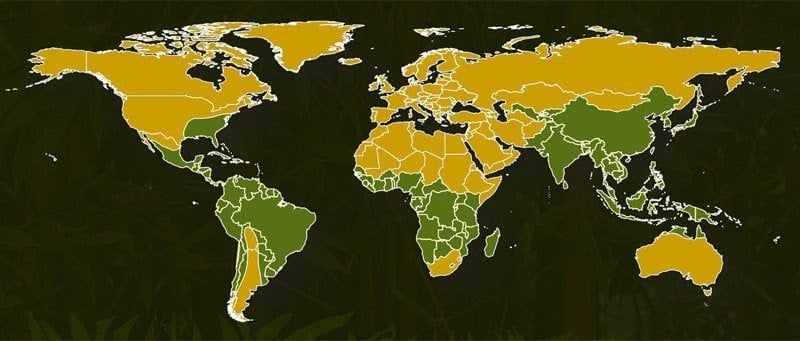
China has over 500 species; Japan has 139, India 119, and Indonesia 118.
Would you believe that bamboo was the only plant to survive the Hiroshima bomb in 1945? The heat destroyed all trees and other plant life except for a single grove.
Versatility
Because forests around the world are experiencing increased pressure from the growing world population, bamboo has become the most important non-wood forest product.
According to the UN’s Food and Agriculture Organization (FAO), rural areas of many countries are using it as a primary construction material.
Bamboo’s versatility becomes evident; people use it for posts, walls, floors, fences, mats, tools, musical instruments, furniture, and more.
The FAO calls bamboo a non-durable resource in its raw form. Without prior treatment, it's is usable for a short period then wears out and becomes useless. However, when engineered or treated, it competes with wood products in performance and price. Whatever wood can do, so can bamboo.
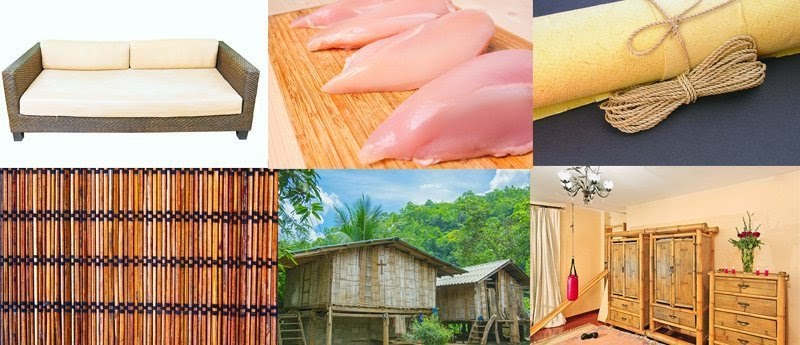
Bamboo’s versatility shows in many ways and many industries. Some of these industries include:
- Housing. According to experts, an estimated one billion people live in traditional bamboo housing.
- Pulp, Paper, and Cloth. When converted to paper, bamboo’s quality is equal to paper made from wood.
- Bamboo Panels. Bamboo has some technological advantages over wood because bamboo fibers are longer.
- Bamboo Flooring. Bamboo flooring is smoother, brighter, more stable, and more flexible than wooden floors.
- Bamboo Weaving Products. Bamboo crafts and woven mats have been traditional products for several thousand years.
- Bamboo Fuel. Bamboo converts into three products: bamboo charcoal, oil, and gas. Pharmaceuticals, beverages, and creams use extracts. Bamboo gas is a substitute for petroleum and cooking uses charcoal.
- Bamboo Furniture. Natural round or split bamboo are two categories using traditional bamboo. Glue-laminated bamboo panels are becoming more prevalent.
- Bamboo and Culture. Throughout history, people developed several uses for bamboo. Some of those products include pens, brushes, paper, and musical instruments.
- Landscaping. Bamboo prevents erosion on steep slopes, soils, and waterways.
Manufacturing Bamboo
In its natural state, bamboo is quite hard, yet brittle and uneven. Because of this, rarely is raw bamboo used in modern applications.
There are several steps manufacturers take to prepare for processing.
Planks
Transforming raw bamboo into planks involves several steps. After harvesting, manufacturers slice the stalks into thin pieces. After removing the skin, it takes a bath in boric acid that kills microorganisms or bacteria and removes any remaining starches.
The combination of pressure, heat, and unique adhesive bonds individual slices into solid pieces, or chips. The manner in which the chips are lined up determines how the plank looks.
A horizontal pattern looks newer and looks natural. A vertical design looks busier, yet full of color blotches.
These blemishes are more effective in hiding dirt and stains than other patterns.
After the adhesives dry, the solid planks are then planed and sanded to give them a smooth surface. Adding a UV lacquer helps the curing process.
Strand-Woven
As mentioned, bamboo is a grass, not wood, and is very fibrous. The process for strand-woven bamboo involves weaving these fibers in an adhesive base resulting in a stronger material. The concept of strand-woven bamboo is new, introduced in 2007.
Carbonizing Bamboo
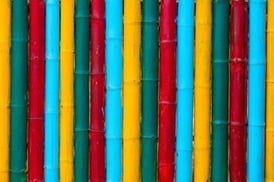
The carbonization process involves either high-pressure steaming or heating, kiln-baked, bamboo. The sugar inside bamboo becomes caramelized, turning it dark throughout all the layers.
Before modern techniques, bamboo was available only in two colors, natural or carbonized.
Today, manufacturers improved the staining process, so it's now available in a variety of stains.
Advantages
The abundance and versatility of bamboo are two reasons why it's a favorite building material. Specifically, it offers several advantages over comparable wood materials, including:
Hardness
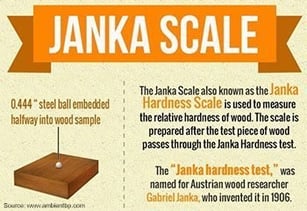
Bamboo did not have a good first impression when introduced in the 1990s. The first generation was soft and easy to scratch.
Later, advanced manufacturing techniques made it three times harder and more durable compared to earlier versions.
The Janka Scale measures the relative hardness of wood, which is an essential factor for flooring. The Scale provides a consistent and accurate way to compare the hardness of bamboo and wood.
The results are surprising: tests on bamboo, a grass, concluded that some varieties are harder than many types of wood, including oak and ash.
Eco-Friendly
Considered a replenishable resource, Bamboo regenerates to full mass in six months. It also yields 15 times more material than trees despite being re-harvested every three years.
Incidentally, this continuous turnover of a bamboo grove does not damage the plant system or the surrounding environment. it grows naturally on five of seven continents, so it is plentiful.
Disadvantages
Eco-Friendly?
Is bamboo eco-friendly? After all, it is an imported product.
Consider the process bamboo goes through before it reaches our shores. It has to be harvested, manufactured, and transported across the globe to the United States.
After arriving, the bamboo ships to facilities throughout the United States.
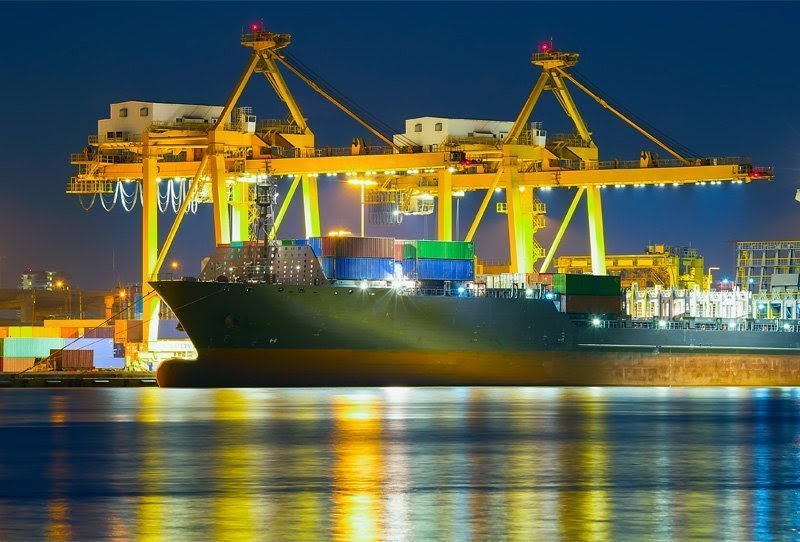
Bamboo is not Solid
Wood is solid; bamboo is not.
This fact does not mean bamboo is an inferior product, but it prevents a fair comparison between the two materials.
In fact, bamboo needs to be engineered to become solid: a plank is made up of several layers laminated together. Over time, those laminations weaken, which threatens the integrity of the plank.
A chain is only as strong as its weakest link, and the same is true for a piece of bamboo furniture.
A weakened laminated plank affects the product's overall strength.
Inconsistent Quality
Since many countries harvest and manufacture bamboo in different ways, there are just as many different quality standards.
There is also the issue of using Chinese manufacturing facilities, which do not have consistent quality control, discussed here.
VOCs and Formaldehyde
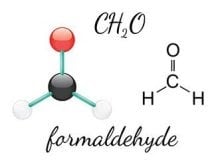
Depending on what manufacturing process a company used, bamboo may contain volatile organic compounds (VOCs) or formaldehyde.
If the bamboo has any dangerous compounds, the first place investigators look is the substance adhering the fibers together.
In 2013, the US Consumer Product Safety Commission (CPSC) released a report warning about acid-cured products.
While not definitive, acid-cured products have the potential for increased emissions.
The boric acid bath raw bamboo takes at the beginning of the manufacturing process increases the risk of formaldehyde exposure.
Soft Surface
Bamboo, like wood products, is not as hard as a laminate surface making it is easy to scratch, dent, and mark up.
In Sum
Bamboo is a plentiful resource that presents a variety of advantages:
- Versatility
- Strength
- A grove quickly regenerates
- A typical harvest yields 15 times more material than trees located with a comparable area
However, there are several disadvantages:
- It requires manufacturing before it is considered solid
- Since many countries manufacture and export bamboo, there are no standards regarding quality
- There is the risk of exposure to formaldehyde or other VOCs
- Similar to wood, bamboo surfaces are soft making it susceptible to scratches

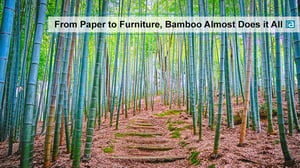
COMMENTS